Review: LiquidSonics Cinematic Rooms Professional
Modern master of atmosphere LiquidSonics returns with a dexterous and cinematic reverb plug-in for those with a penchant for surround sound.
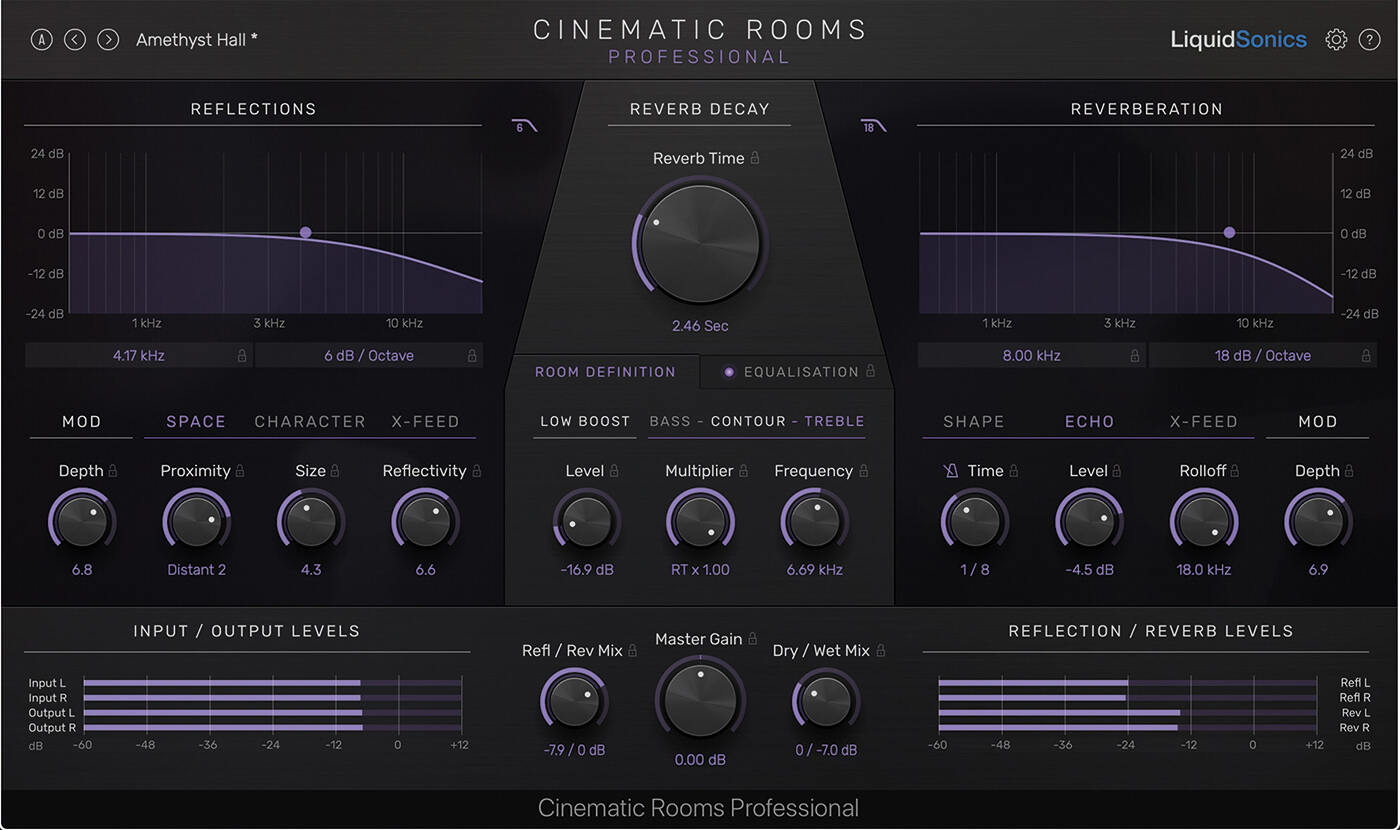

Price Standard Edition – £150 | Professional Edition – £300
Contact LiquidSonics
LiquidSonics may not be a name with which you’re familiar but, if you are, it’s likely to be because of Seventh Heaven. The UK company’s reverb plug-in provides a faithful and thorough emulation of the famous Bricasti M7, and received glowing reviews upon its release in 2017. With the subject of this review, LiquidSonics, founded in 2014, is looking to build upon its fledgling status as a go-to for media composers.
Capable of operating in stereo as well as a full complement of surround-sound configurations, this reverb plug-in aims to blend best-in-class room emulation with a lightning-fast workflow, and is available in Standard and Professional editions. It’s the latter we’re looking at here.
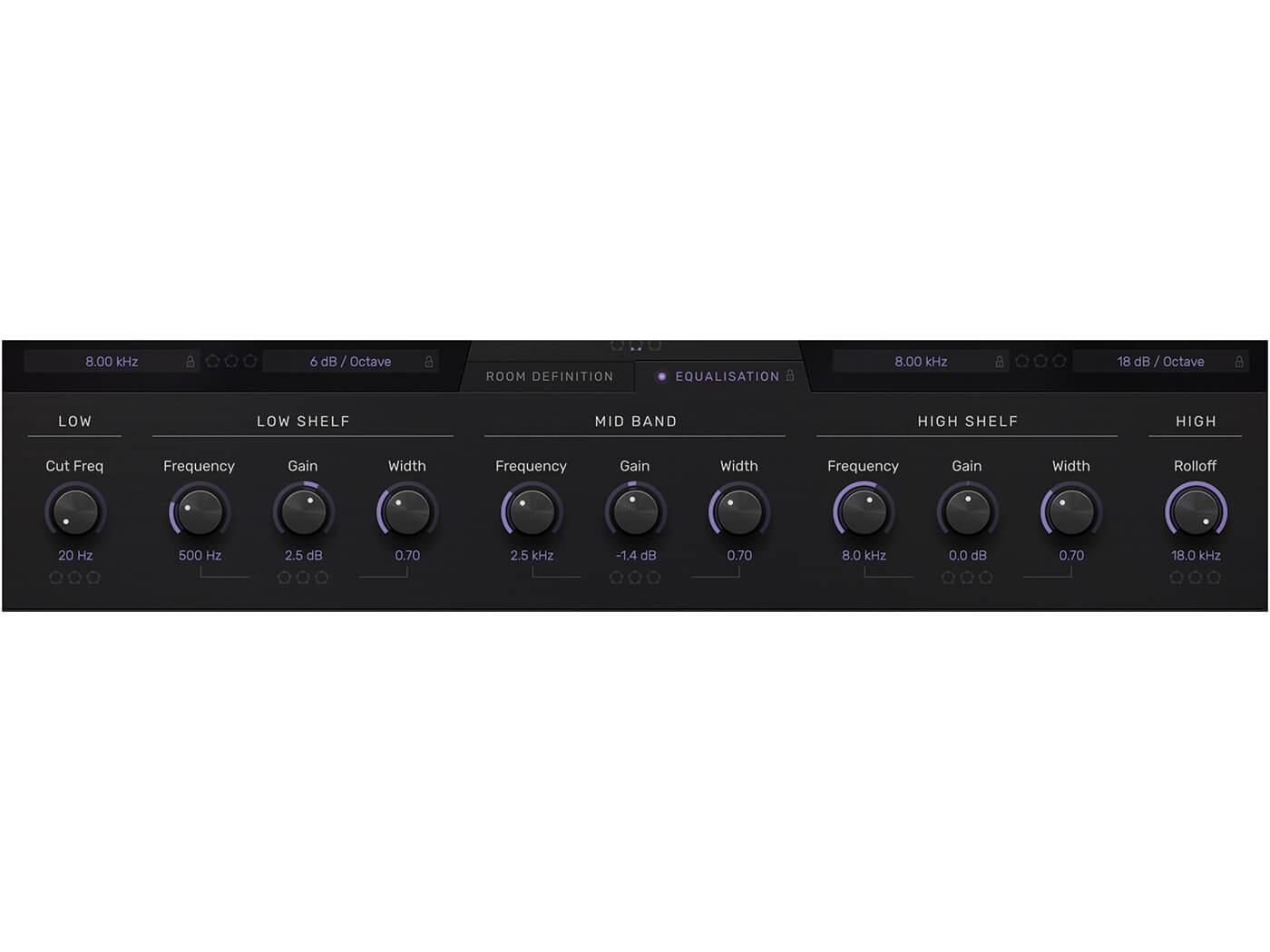
Room design
While operating in stereo, there are many parameters available. The left of the interface is dedicated to early reflections. At the top, you’ll find access to roll-off filtering, and below sit four parameters used to contour the reflection stage. These include Space – which has its own range of proximity algorithms (close, medium and far, as well as reverses) – Size and Reflectivity, which are presented as dials. These parameters grant you control over your virtual room’s behaviour. For example, you can pick the scatter pattern of your reflections from a range of choices, and control the diffusion and the width of their stereo image.
The central section of Cinematic Rooms’ GUI features a prominent rotary that gives you control over reverb time, and features decays of up to a maximum of 45 seconds before reaching the never-decaying Infinite option. Below this, you’ll find independent decay contouring for treble and bass bands, and an EQ pane with which to tonally shape your virtual space. At the bottom, there’s a master gain control flanked on one side by a blend dial, which lets you balance the reflection and reverberation stages, and on the other by a wet/dry dial.
The right of the plug-in provides controls for the reverb pathway, with tempo-syncable pre-delay and echo stages alongside controls for cross-channel feed/spill. The metering is comprehensive too, with separate left/right input and output meters alongside similarly separated monitoring for the reflection and reverb stages. You’ll also see padlock icons dotted around the interface. Clicking one of these fixes the related parameter’s current setting so your key parameters will be preserved even as you explore others.
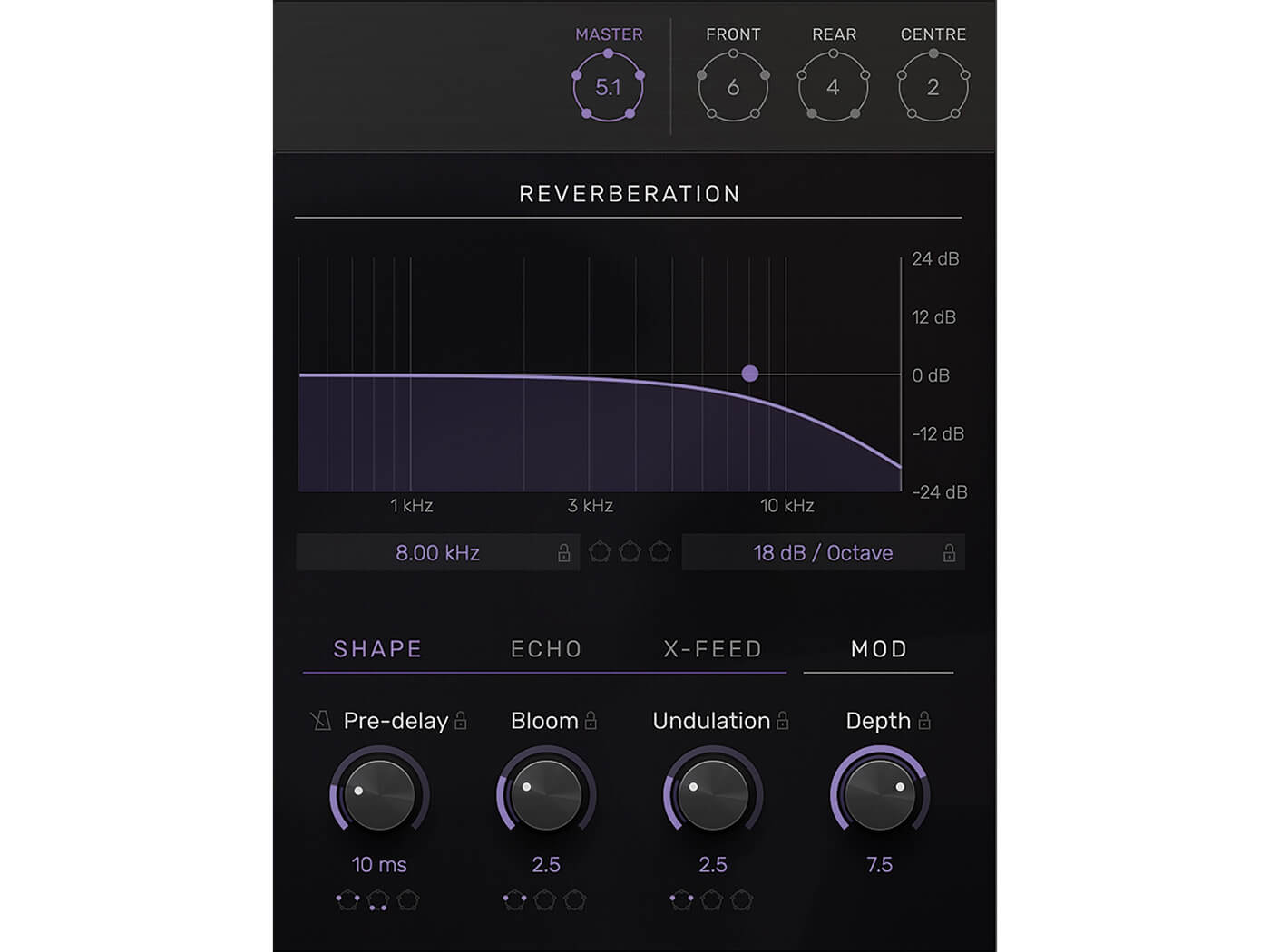
The rich sound of surround
Such deep functionality makes Cinematic Rooms an excellent reverb for a variety of applications. But the reason it’s attracting the interest of increasing numbers of media composers is its surround-sound capabilities. Not only does Cinematic Rooms support systems up to and including Dolby Atmos configurations but the interface allows you to tailor a reverb solution to your specific requirements.
When loaded as a surround plug-in, Cinematic Rooms lets you choose speakers in pairs (or the centre speaker in mono) and make offsets to any parameter for that pair. You may, for example, want a longer decay time for the rear speakers or a different tonal shape or pre-delay time for the front – all of which is easy to achieve via the intuitive controls in the upper-right corner. Clicking the master speaker configuration will show you whether any speaker pair is using an offset, thus letting you keep track of your settings at a glance.
Cinematic Rooms sounds gorgeous. It’s rich, lush and dense from the outset but, as should be clear from our tour of the parameters, its true genius lies in just how controllable each stage of the space-designing process is. You can load a preset and get a great sound immediately or dive in as deeply as you like and tweak until your heart’s content. LiquidSonics’ new plug-in perhaps represents a new standard in media-friendly reverb design.
Key features
- Stereo, LCR, Quad, 5.1, 7.1 – 7.1.6
- Decay of up to 45 seconds, with Infinity setting
- Reverb and reflection roll-off
- Reverb decay contouring
- Pre-delay with sync
- Level monitoring
- Surround, true stereo, multi-mono propagation
- More than 300 presets with reverb-time-based filtering
- Buy: KRV Audio, LiquidSonics
Alternatives
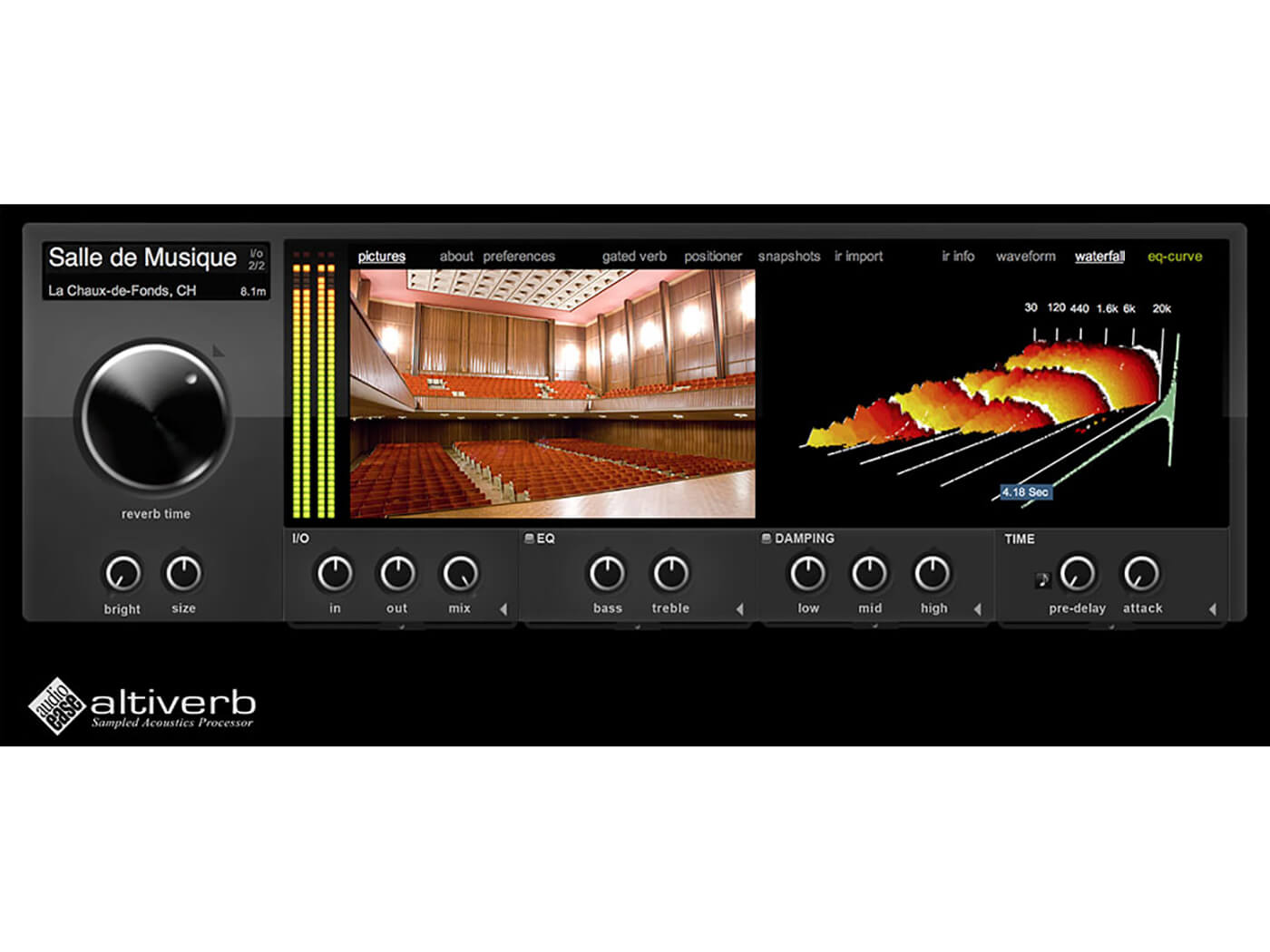
Audio Ease
Altiverb 7 £770
Long considered a heavyweight in terms of mixing and post-production, Altiverb continues to set the bar for convolution reverbs.
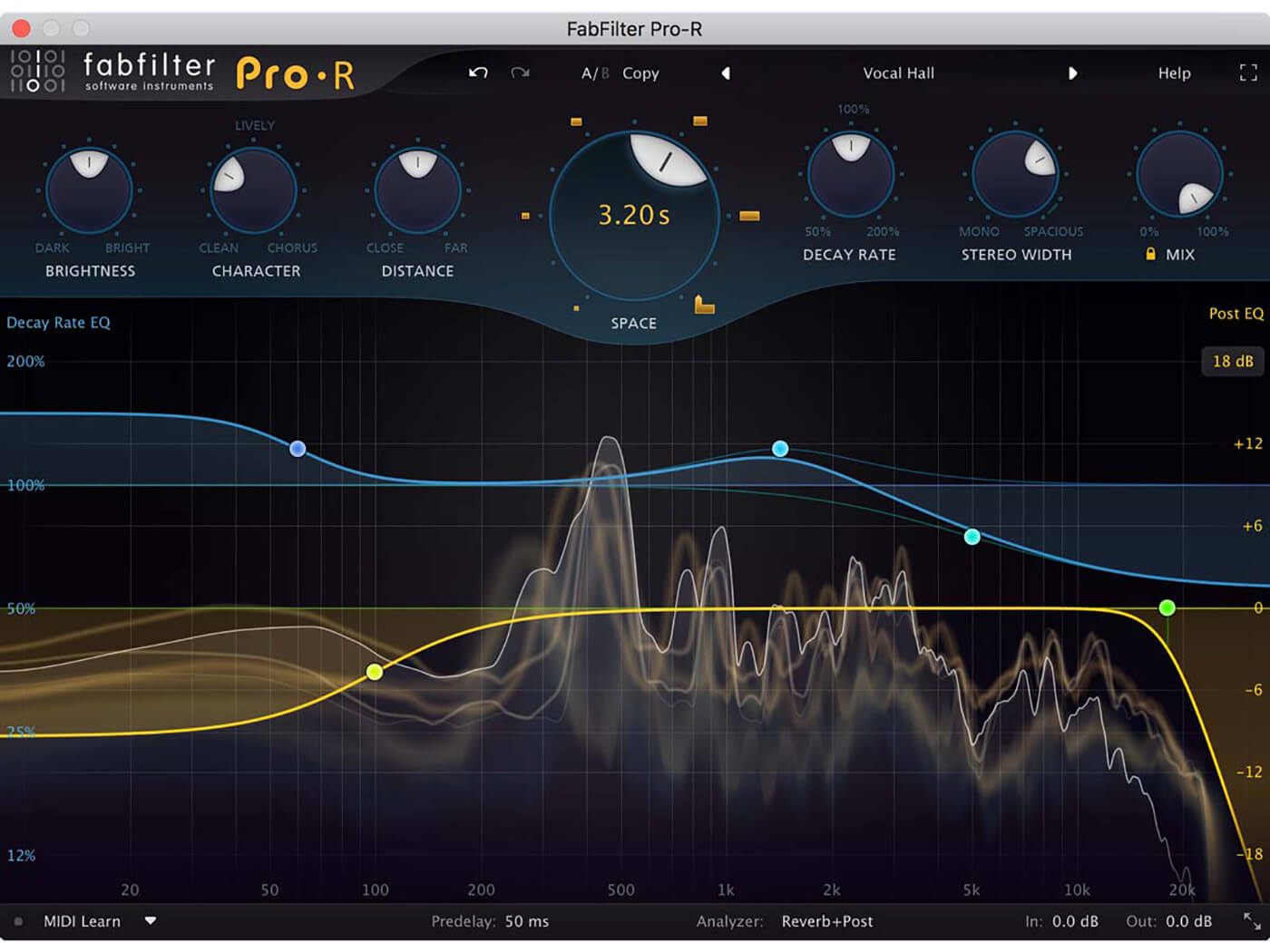
If you’re drawn to Cinematic Rooms’ bespoke sound-shaping options and don’t need surround sound, consider FabFilter’s Pro-R. It’s similarly seamless to operate and boasts a flexible sound as standard.